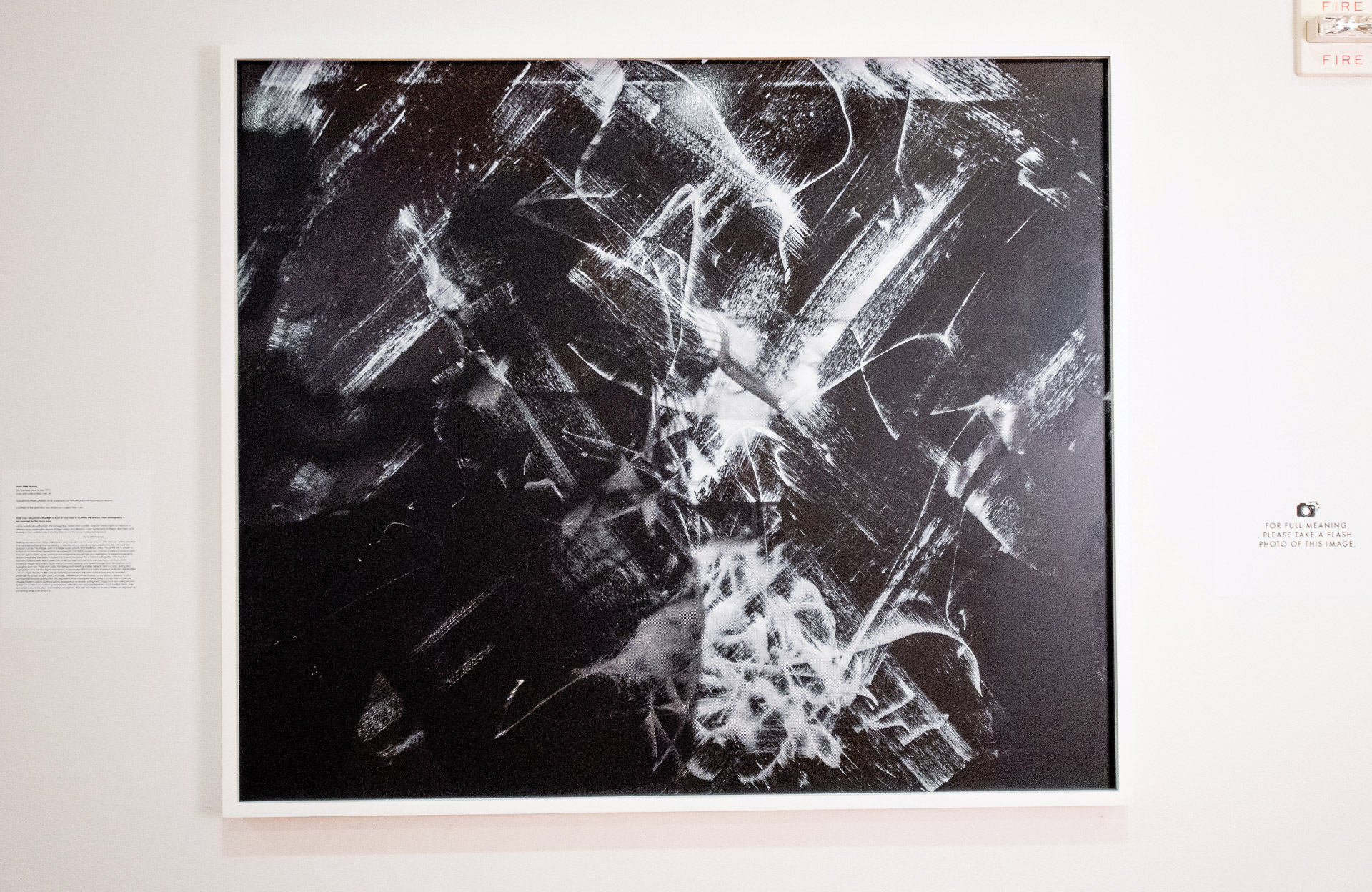 Hank Willis Thomas
Hank Willis Thomas ![Turbulence (White Strokes) [detail] by Hank Willis Thomas](https://www.depauw.edu/files/callouts/shifting-gaze-hank-willis-thomas-detail.jpg) Hank Willis Thomas
Hank Willis Thomas Hank Willis Thomas
(b. Plainfield, New Jersey 1971)
Lives and works in New York, NY
Turbulence (White Strokes), 2018, screenprint on retroflective vinyl mounted on Dibond
Courtesy of the artist and Jack Shainman Gallery, New York.
Hold your cell phone’s flashlight in front of your nose to activate the artwork. Flash photography is encouraged for this piece only.
All my work is about framing and perspective, history and context. How do I shine a light on history in a different way, making the moments feel current and allowing a new relationship to them? And then I was looking at this material called retroflective—even the name implies looking back. —Hank Willis Thomas
Making moments from history feel current and relevant is at the core of Hank Willis Thomas’ artistic practice that includes exploring themes related to identity, race, masculinity, commodity, media, history, and popular culture. This image,part of a larger body of work and exhibition, titled “What We Ask Is Simple” is based on an important phrase from an American Civil Rights protest sign. Thomas unveiled a body of work that brought to light, again, violence and intolerance via vintage documentation of protest movements around the globe. The series included the funeral procession for a militant suffragette, 1936 German shipyard, a black teen who carried the American flag from Selma to Montgomery, members of the American Indian Movement, South Africa’s Soweto uprising, and several images from Birmingham to St. Augustine from the 1950s and 1960s. Rendering and arresting painful aspects from our past, during anti-segregation and the Civil Rights Movement, many images that have been erased or redacted are revisited with new light, literally as they are concealed just beneath the shiny surface and only by revealed physically by a flash of light onto the image. Turbulence (White Strokes), at first glance, appears to be a non-representational abstraction with expressive mark-making like white noise in chaos. The turbulence unveiled reflects police violence during segregation as ghostly, a fragment, foggy from our collective past, its flash into existence, as if being resurrected, reflecting the poignant timeliness. Such conflict, terror, pain, and division are immediate and address an urgency that can no longer be erased, hidden, or disguised as something other than what it is.